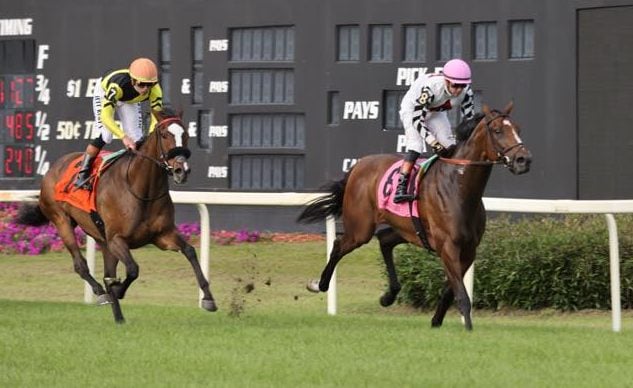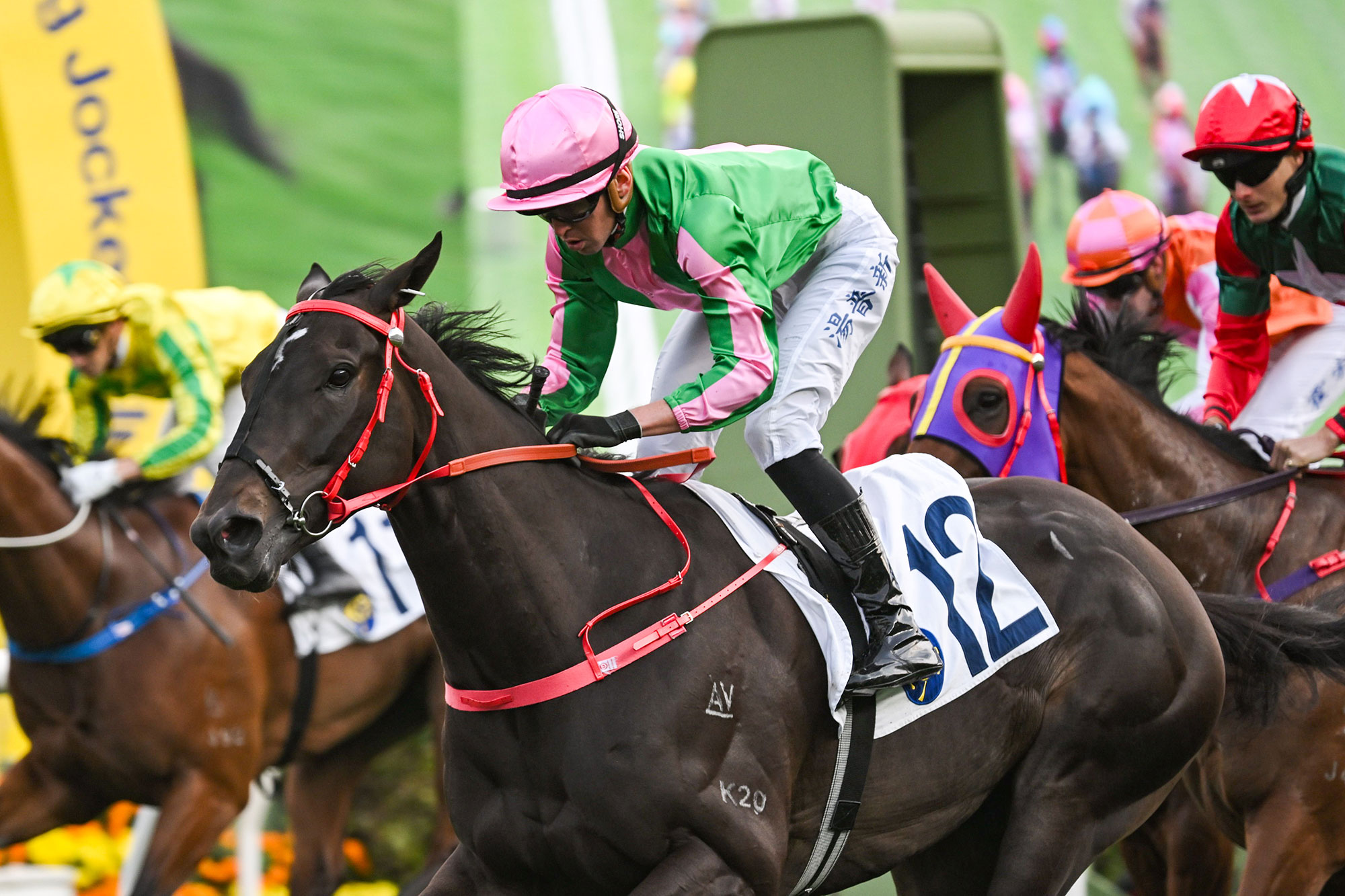Sports marketing needs heroes. Without them, we have so much less reason to be engaged with what’s happening on the field – or whatever the arena might be.
Oscar Foulkes writes that we should consider what the course of the IPL might have been if the teams didn’t have international stars, especially in the beginning before the franchises themselves gained a following.
My interest in the competition was admittedly only in the early years, but I immediately latched onto the Deccan Chargers because of the standards of cricketing integrity and sportsmanship set by their captain, Adam Gilchrist.
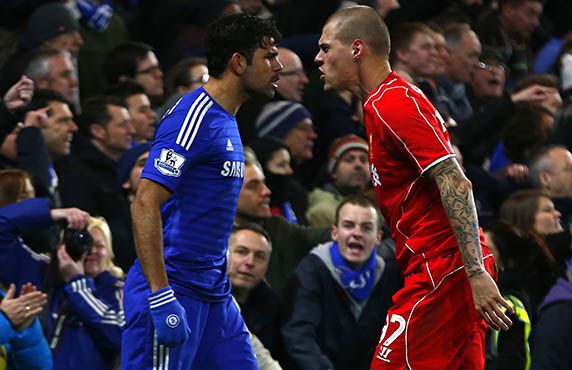
Chelsea’s Diego Costa (L) and Liverpool’s Martin Skrtel argue during their English League Cup semi-final REUTERS/Eddie Keogh (BRITAIN – Tags: SOCCER SPORT) – RTR4N7R7
In British football, the team – or franchise – is the uber-brand that has a life much longer than any player or manager, but even here teams need stars.
In the case of horse racing, the athletes are the horses and jockeys, with trainers filling a similar role to football managers.
Let’s have a look at the athletes.
Part One – The Jockeys
The combination of required skills, not to mention the stresses and dangers of their profession, puts jockeys in the same league as the leaders in any sport.
The genius of a champion jockey may not be revealed in as clear detail as an extended rally between Wimbledon finallists, but it’s there.
Timeform calculated that the difference that Lester Piggott made to a horse’s performance – on average – was about three pounds (i.e. compared to the same horse being ridden by other jockeys). It’s not something that seems impressive on a case-by-case basis, but in aggregate it adds up to a lot of races won.
Another factor is that jockeys often do this well into their fifties. That’s a sports career of extraordinary longevity, especially when one considers the physicality of what they do. It also means that they are in the public eye for a lot longer than rugby or soccer players, for example.
In my opinion, Racing could make a lot more marketing use of these stars than it does.
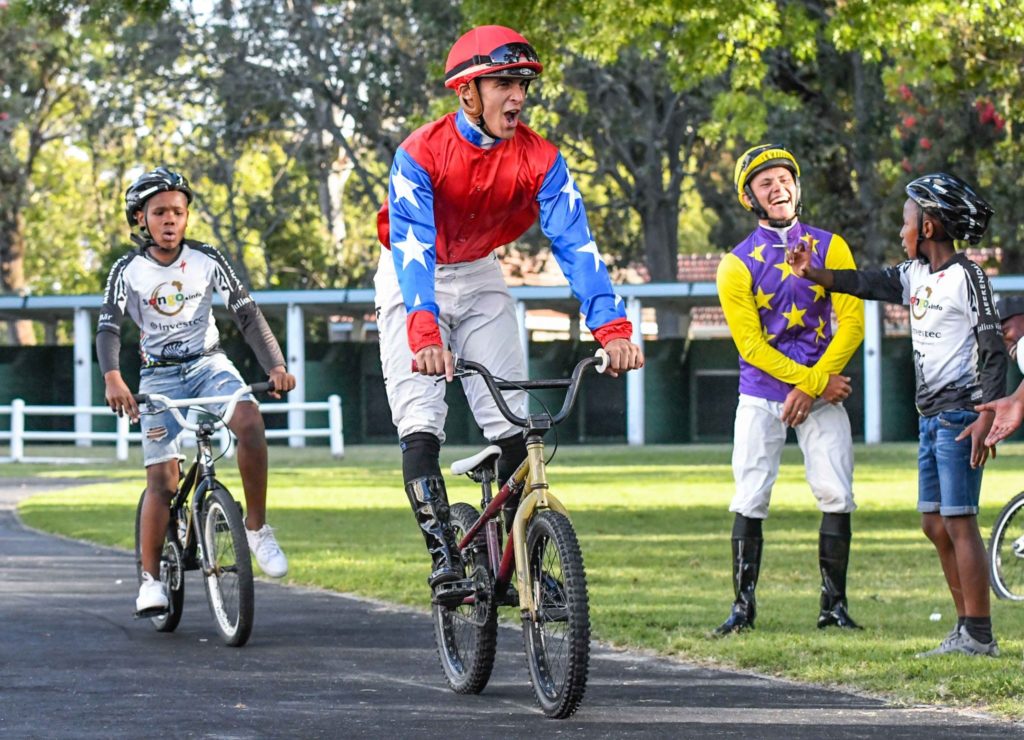
Keagan de Melo and Richard Fourie are having fun for a good cause (Pic – Chase Liebenberg)
In the “are you faster than a third-grader?” BMX match races between the songo.info kids and the jockeys on Saturday 23 November at Kenilworth, I expected the kids to clean up. However, I wasn’t entirely prepared for the level of skills that many of the jockeys demonstrated (I shouldn’t have been that surprised – they are athletes, after all).
What blew me away, though, was the generosity with which they gave their time, the good spirit they displayed in the face of being thrown into an unfamiliar discipline, and the overall sense of fun that pervaded the entire event.
There were donations from 13 owners, for which we had enough riders, and yet Craig Zackey and Ossie Noach insisted on participating as well (they were in the colours of Wilgerbosdrift and Francis Carruthers respectively – if either of them is reading this, songo.info needs all the support it can get).
The whole thing took no more than 30 minutes after the last race, but for me it was one of the best half-hours of the year.
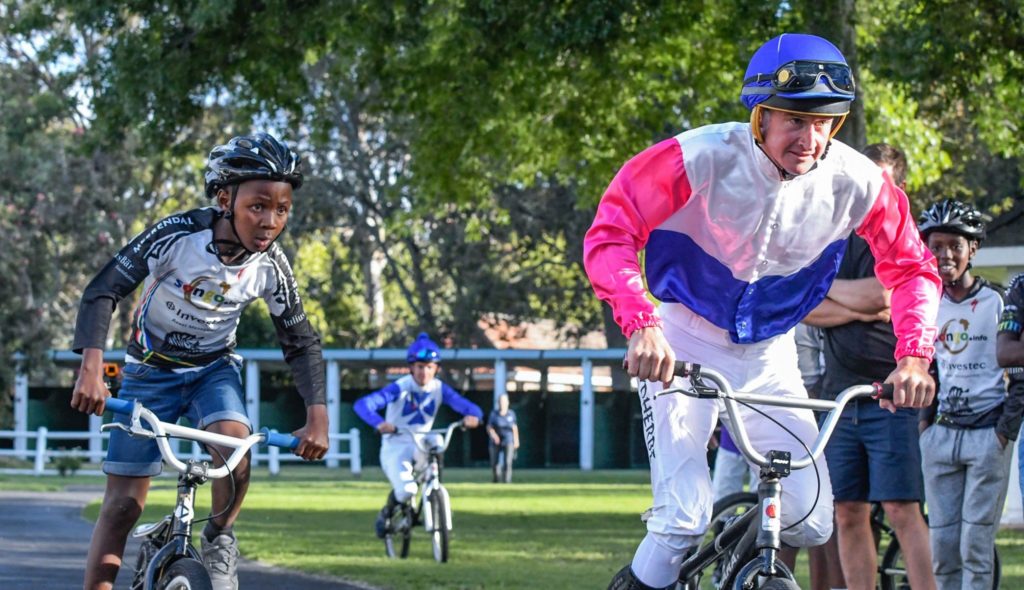
Bernard Fayd’herbe enjoys the BMX fun 9Pic – Chase Liebenberg)
While one can’t expect a jockey walking into the parade ring before a big race to have anything other than a ‘game face’, Racing would benefit by building a richer, multi-dimensional profile of these sportsmen, and sharing that with the broader market. Their performance during the BMX shoot-out was a glimpse of how much more they have to give.
By the way, I’m not just trotting out an idea – I’d be happy to get involved in driving such a project (and it needn’t be a big budget exercise).
Part Two – The Horses
By comparison with jockeys, horses’ careers are over in a flash. The obvious reason is that horses have shorter lives (especially as athletes). However, we also have the utterly ridiculous proliferation of handicap racing to thank for it.
It appears that the operator’s underlying view is that handicap racing is better for betting pools than conditions races that favour good horses. Personally, I’d like to see the data that supports this. As it stands, the industry is in trouble, so we may as well default to putting on the best spectacle we can.
The aim of handicap racing is to make it hard for the best horse to win. The knock-on effect on the creation of equine heroes is obvious.
Pause for a moment to imagine how much worse this will get when export protocols facilitate the large-scale export of proven performers that have been handicapped out of contention.
We won’t just be losing the likes of White River – we’ll also be saying goodbye to many Sun Met, LQP and Computaform Stakes contenders.
As a case in point of why we can’t only rely on equine heroes, I mention Sergeant Hardy, who ran his last race on Saturday 23 November.
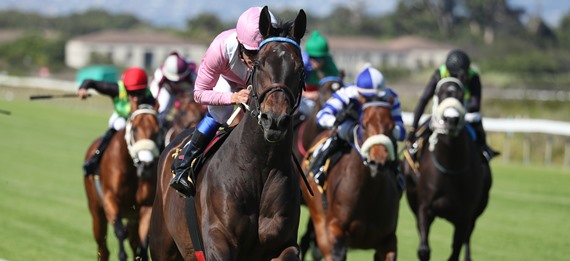
Sergeant Hardy
He was a physically handicapped Grade I winner that was probably the best sprinter of his generation (I’ll take you through the form if you need convincing), but he flopped in both Gauteng and KZN.
His genius was much less obvious than that of horses that reliably repeated their form over several seasons.
To market the sport of Racing to a broader audience, we need equine heroes that need no inside knowledge or special understanding. In time, we would hopefully also be able to build the profile of the races that determine the champions of each generation.
For example, we want people to go to the course for the Cape Guineas because the winner might be on its way to being the best of its generation.
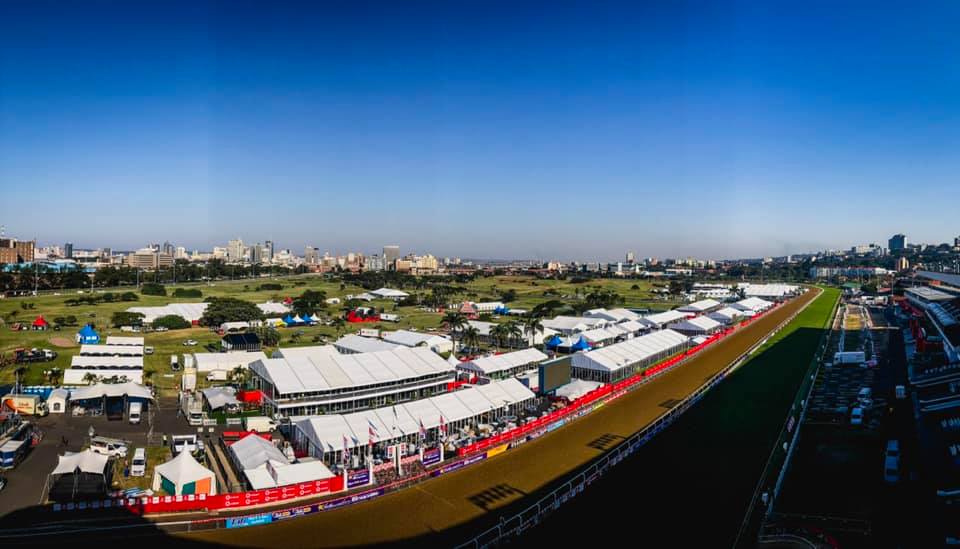
Instead, we have a massive crowd for a handicap – the Vodacom Durban July – that is not reliably won by the best horse (i.e. the WFA top weight). It’s no surprise that newbies are often left wondering whether horse racing is no better than a spin of the roulette wheel.
In the realm of contests between heroes, could it get better than the expected Sun Met match-up between Hawwaam and Do It Again, ridden by Anton Marcus and Richard Fourie?
There’ll be a top-class supporting cast, and they are running at level weights.
That’s a story worth building in mainstream media in the lead-up to the first of February!






